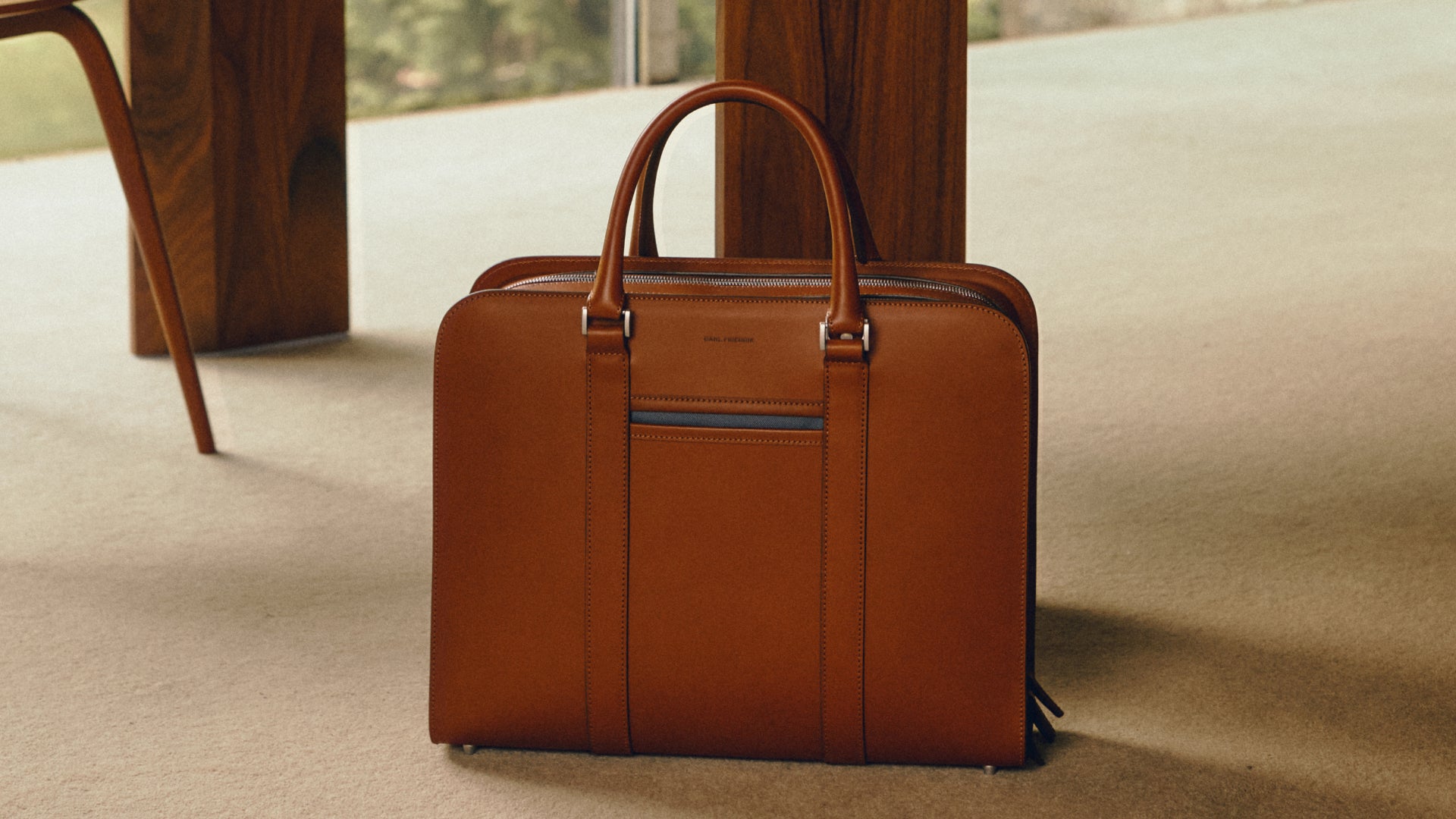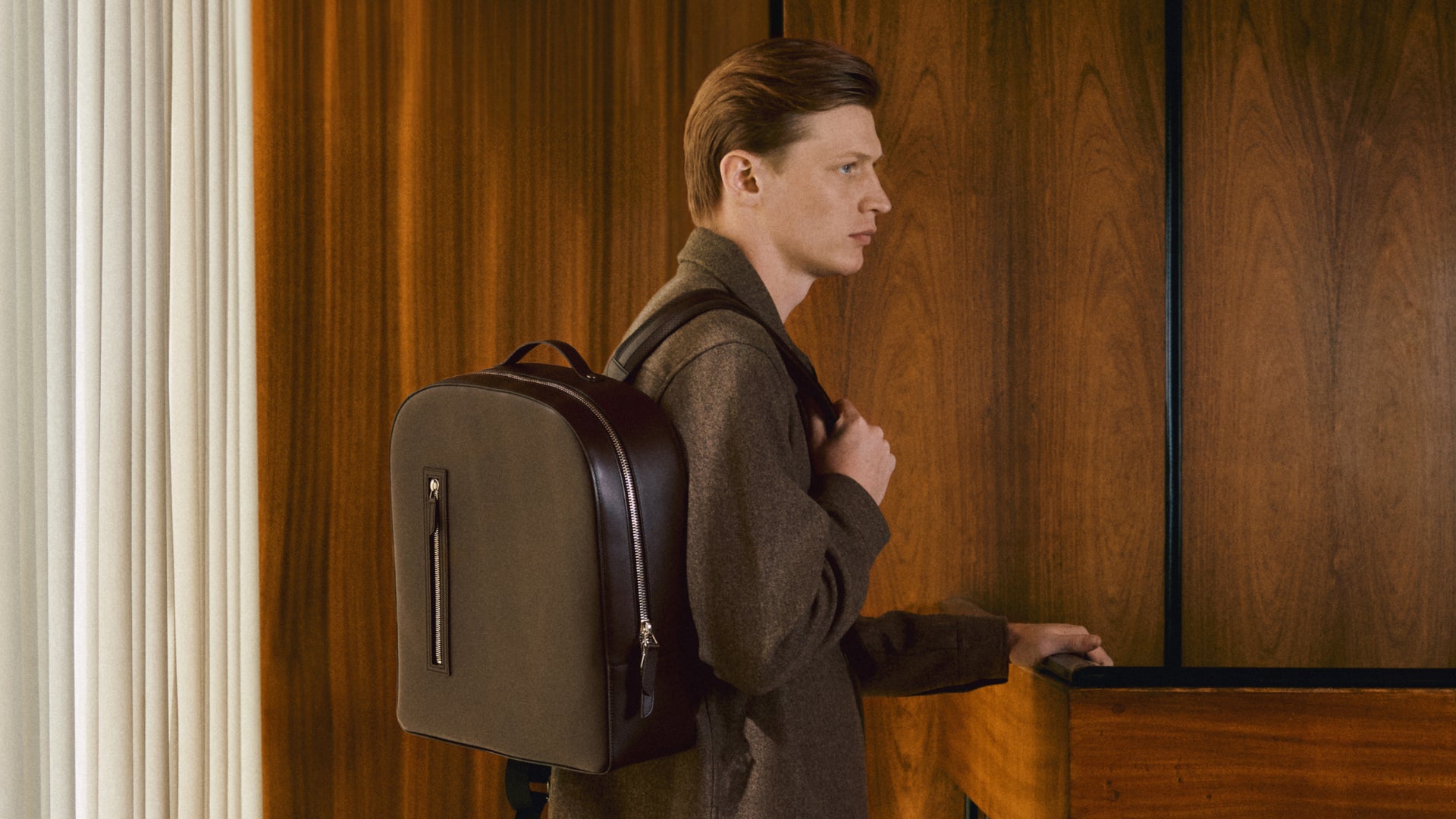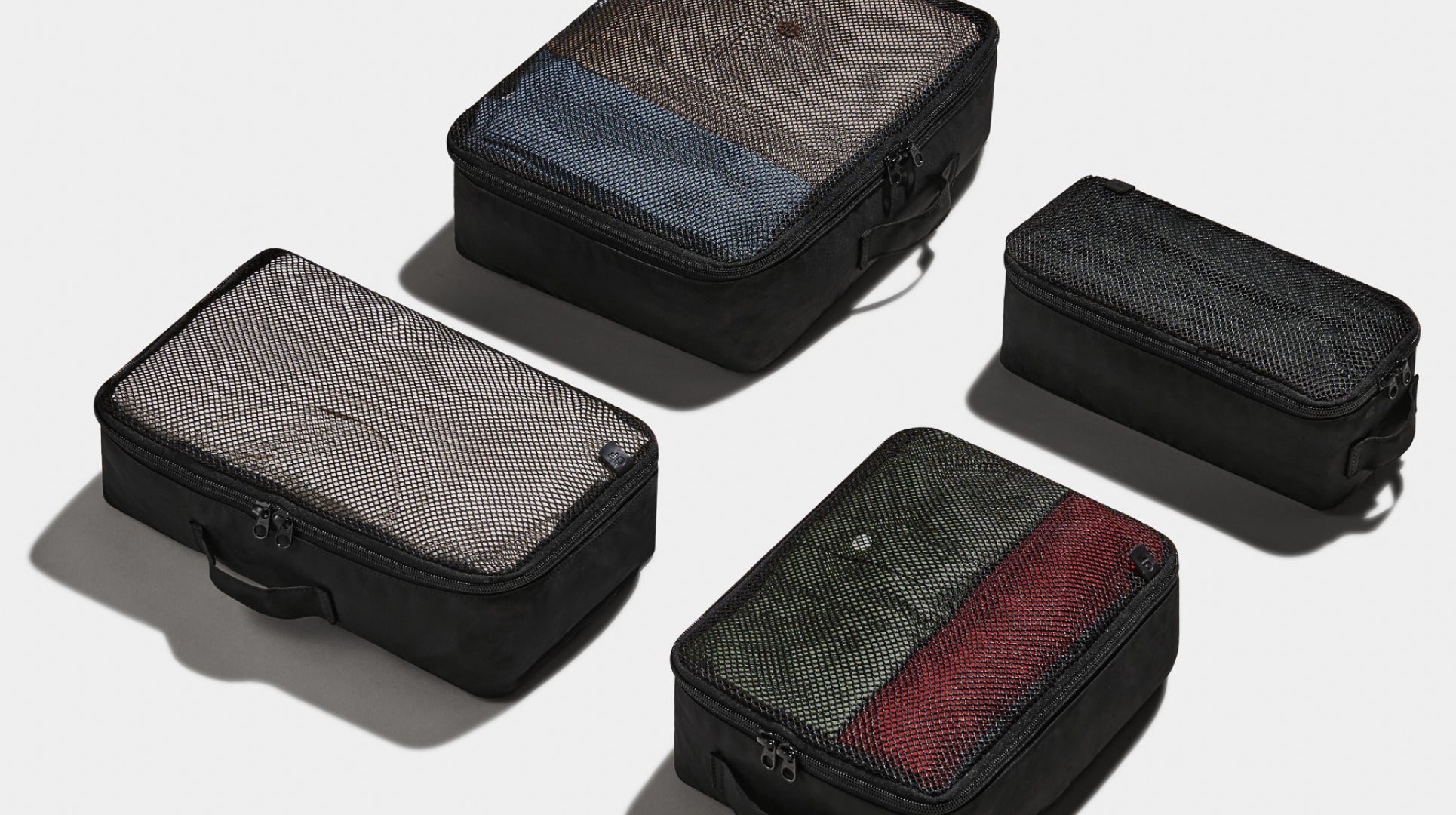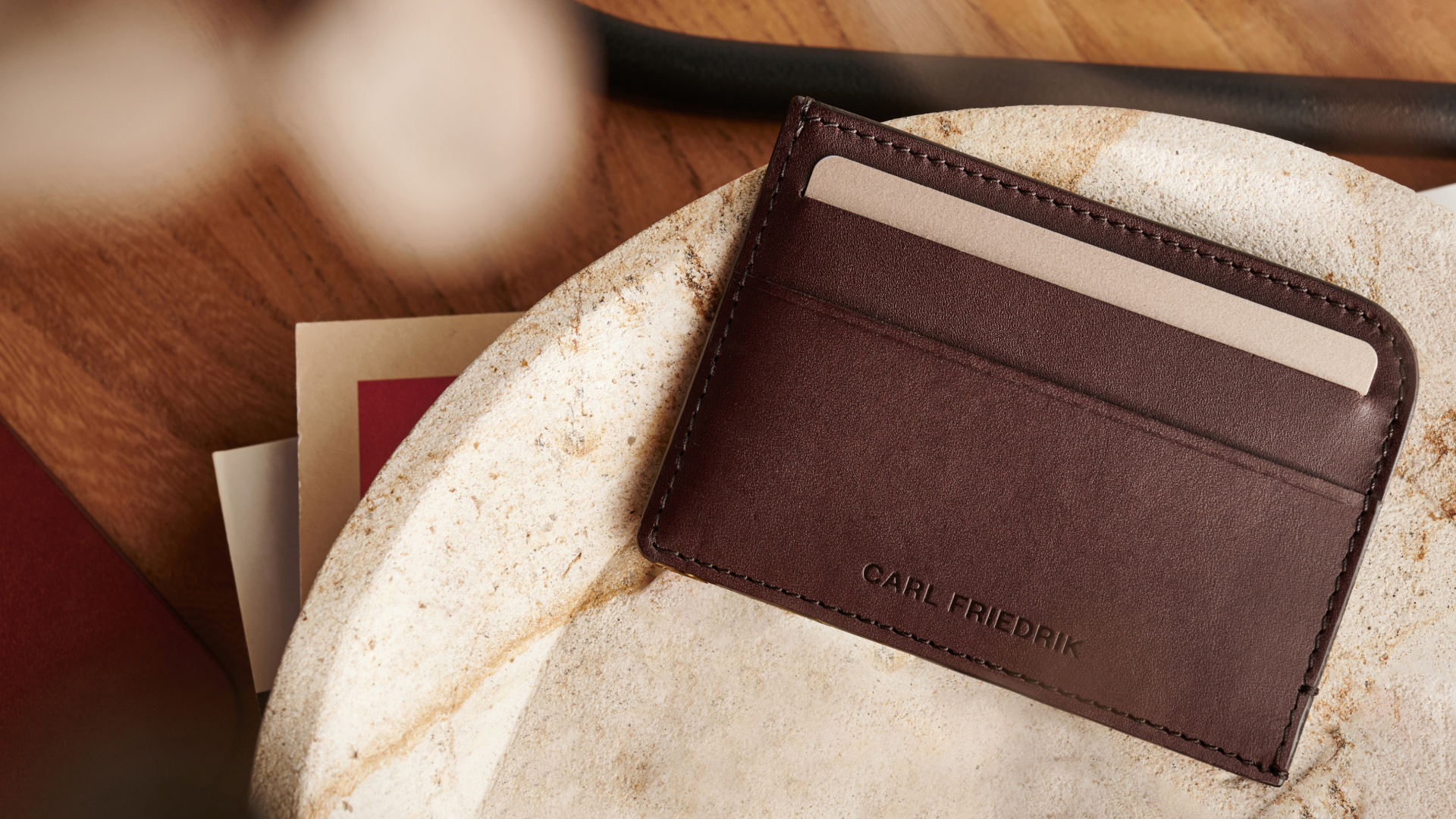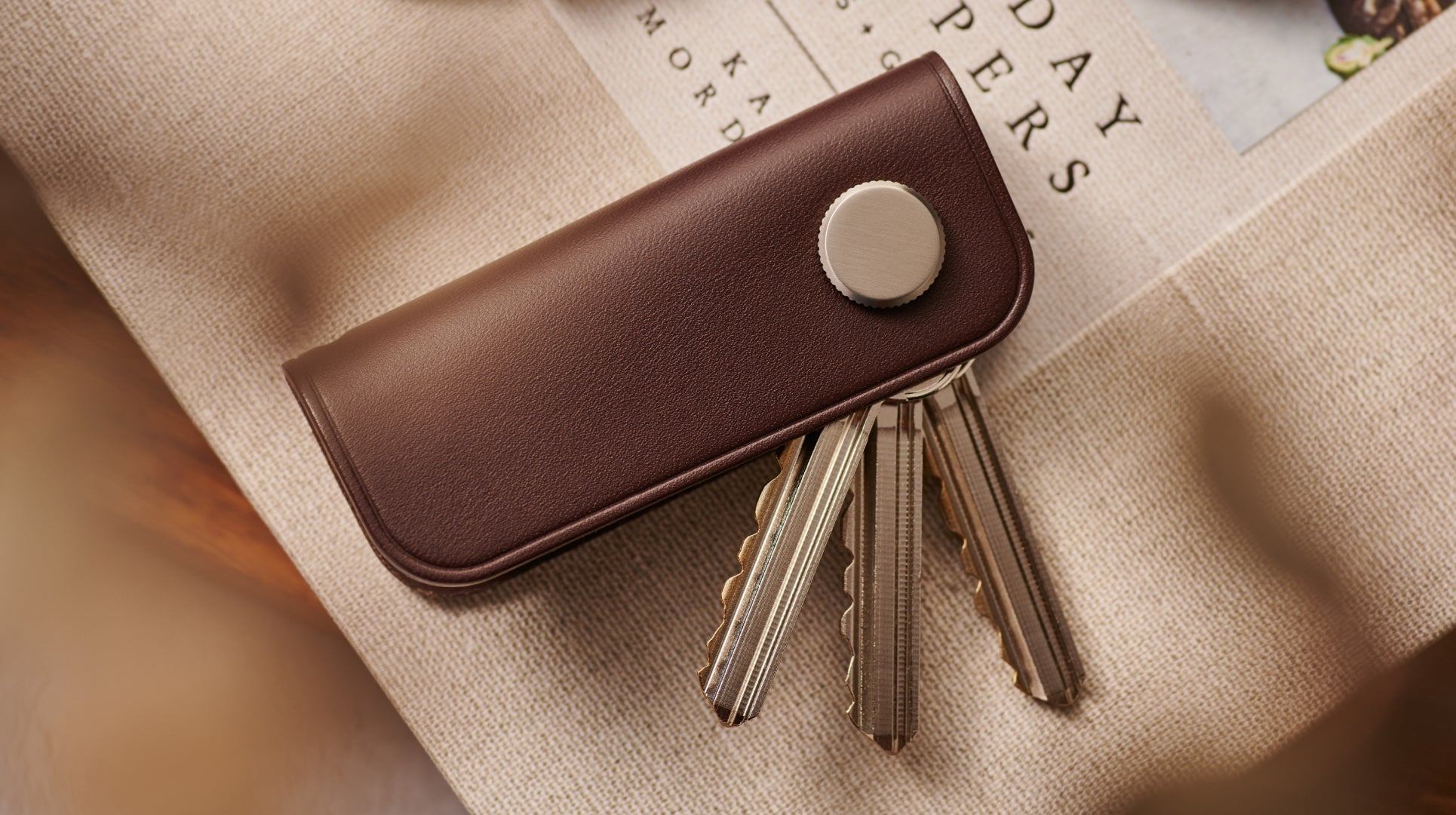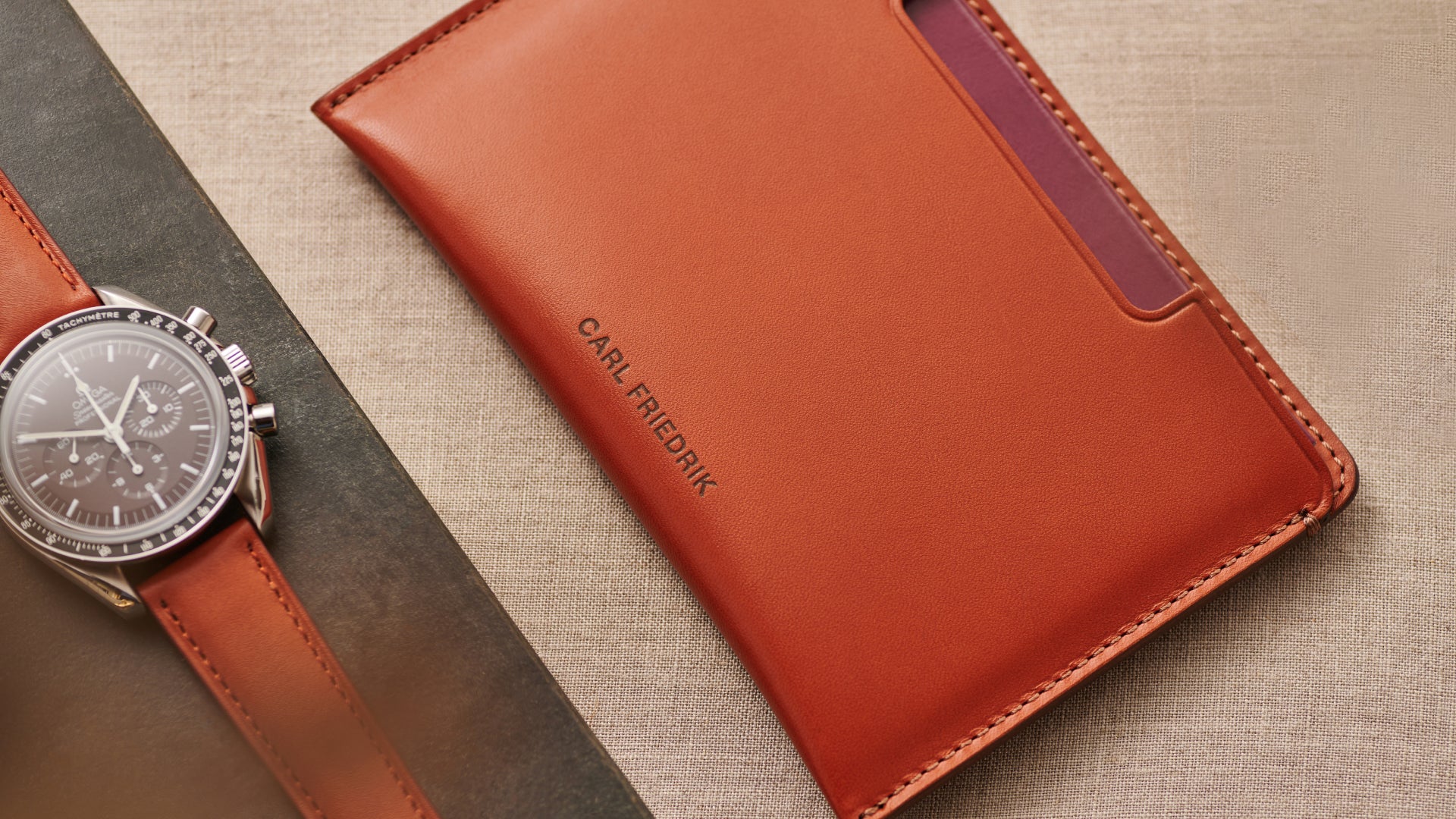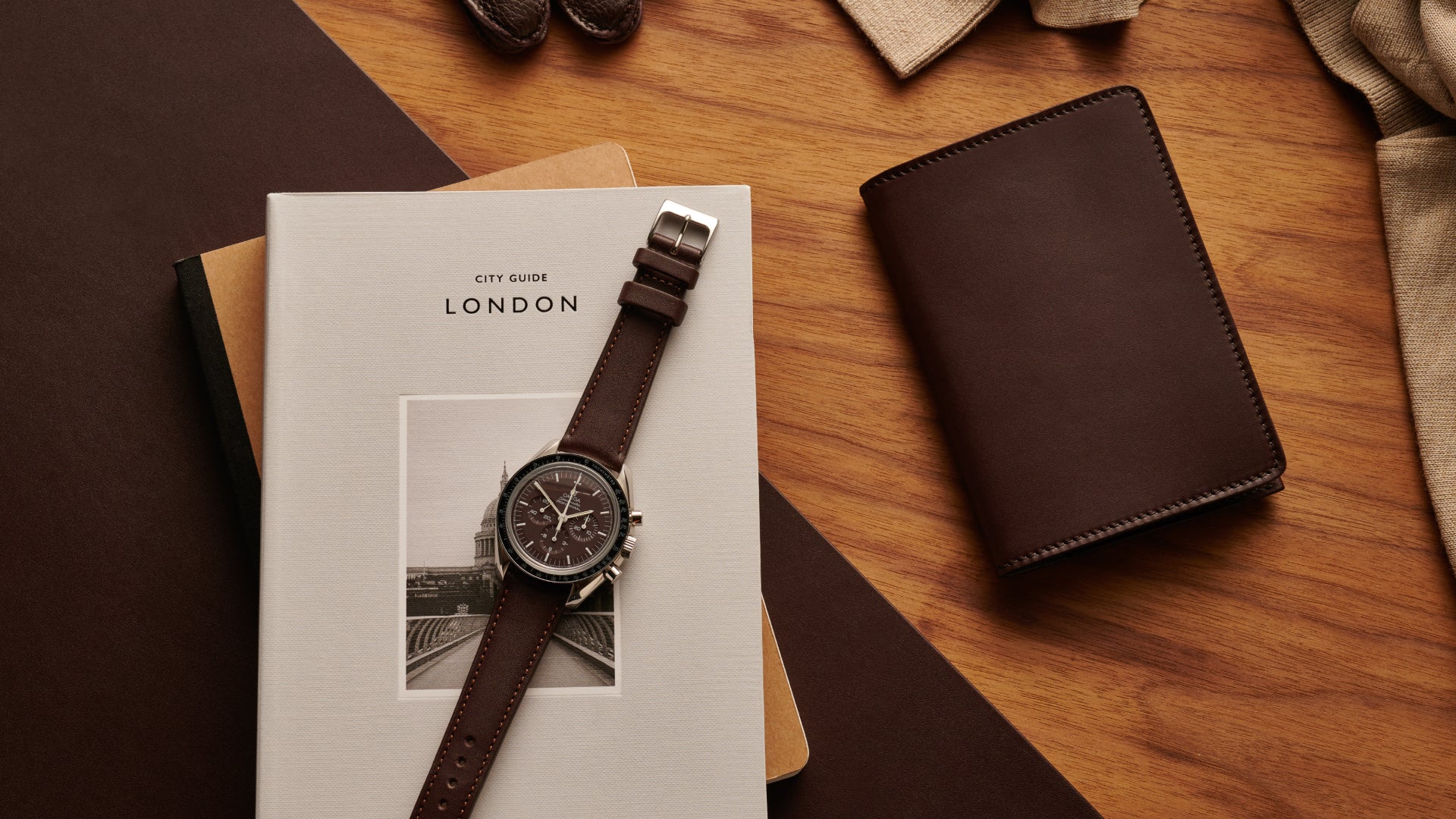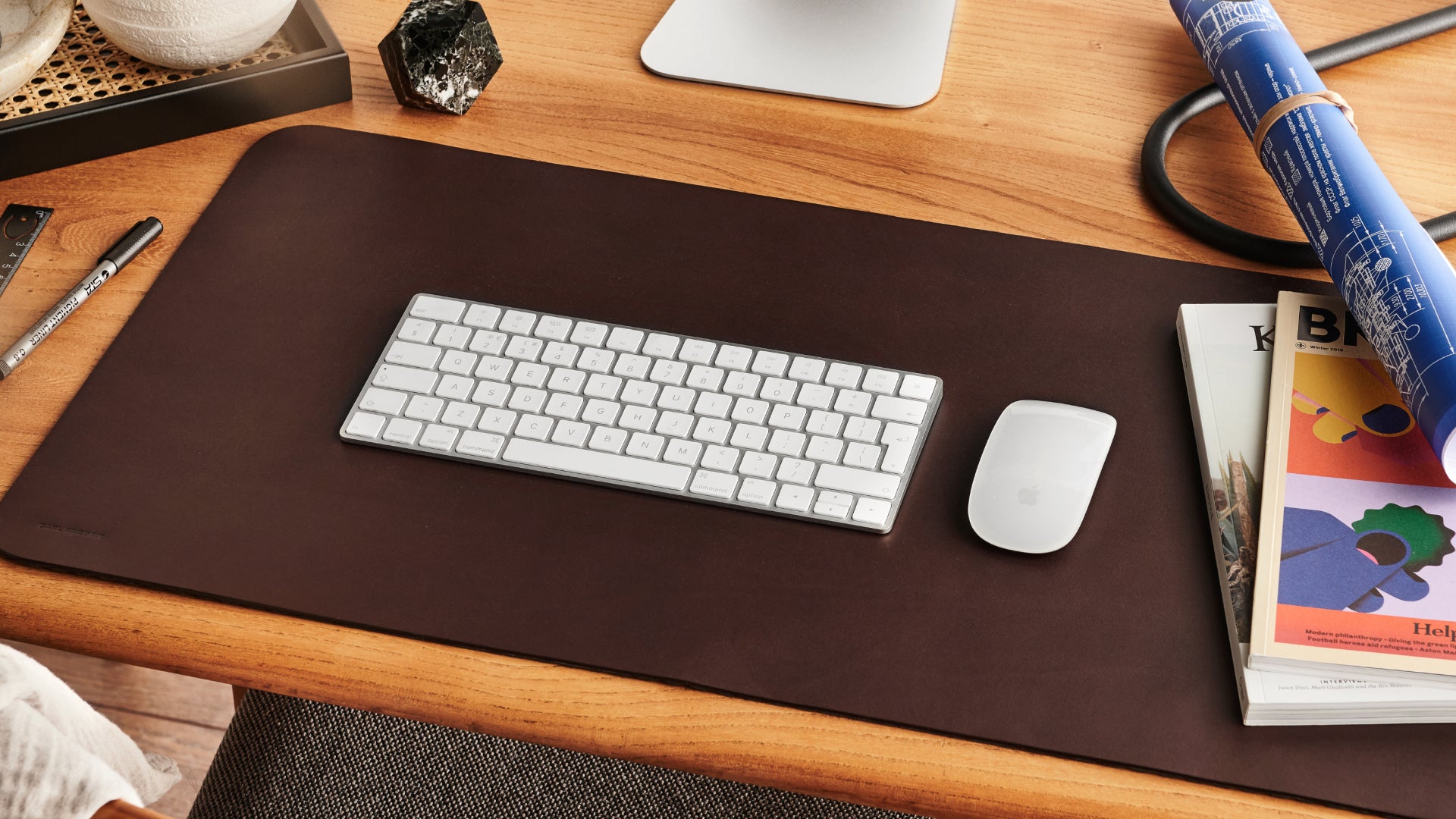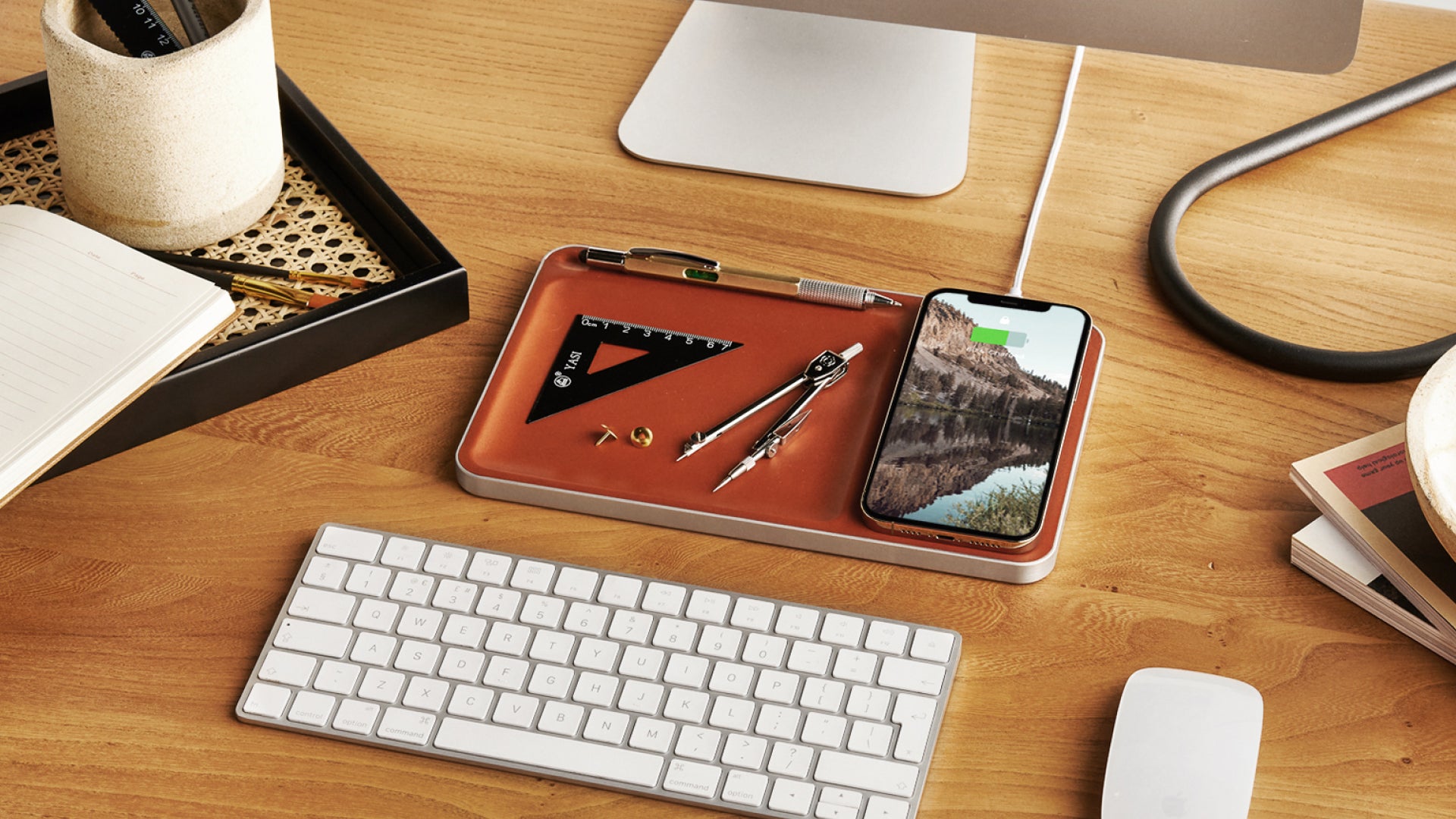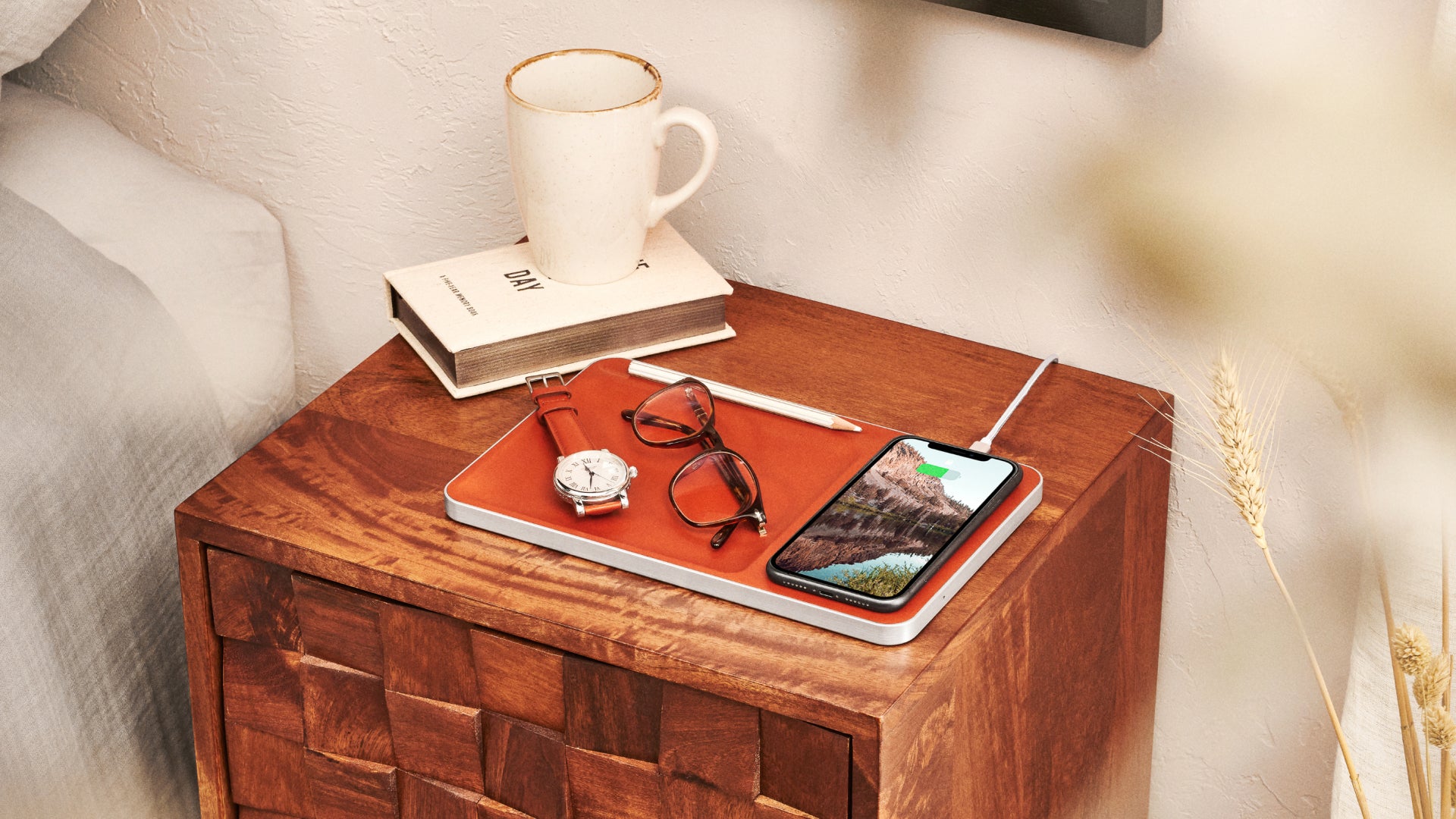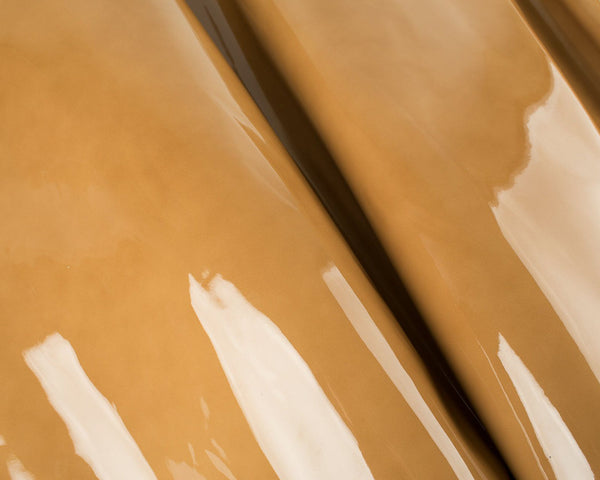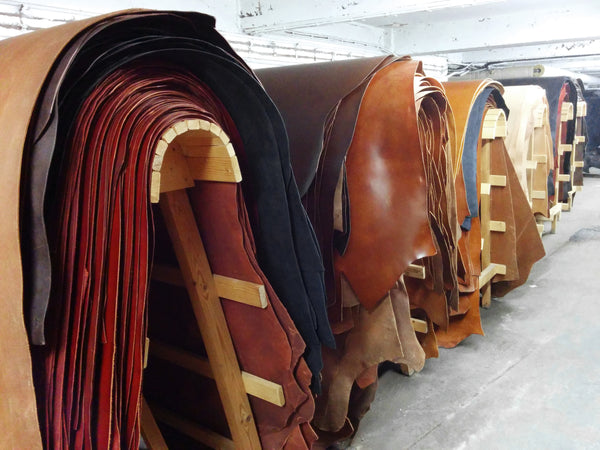Are you struggling to differentiate Saffiano from other swanky leather styles? Then this article is for you. We’re covering all the need-to-know Saffiano information in this handy guide.
A long-lasting fixture of every luxury high street store, this elite type of textured Italian leather is renowned for its durability and elegant crosshatch finish. It’s a premium product that tends to retails at an elevated cost.
In this guide, we’ll kickstart proceedings by answering the question, 'what is Saffiano leather?'. Next, we’ll cover the history, primary uses, pros and cons, and the production process of this sought-after textured leather type. And to help you keep your sleek Saffiano products looking newer for longer, we’ll dish out some tips on how to clean and care for them.

What is Saffiano leather?
Saffiano is a type of pressed, textured leather where a special stamping method is used to obtain the desired grain. In essence, the tanner utilises a custom-built Saffiano stamping machine to emboss a distinct crosshatch finish — the product's most iconic feature.
Any leather type could lie beneath the finish, from vegetable-tanned to Nappa or PVC and PU. So long as it’s stamped with a crosshatch finish, the leather is officially considered 'Saffiano', and the manufacturer will proudly stitch that illustrious title onto the label.
Saffiano leather is coated with wax rather than dyed (although sometimes it’s dyed and waxed). As the crosshatch finish hides the leather underneath and any conceivable colour can be added to the resin, the dying process becomes somewhat redundant.
The wax topcoat makes Saffiano extra durable and creates its signature glossy shine. What’s more, wax-coated leather is easy to clean and maintain, making it ideal for everyday use.
While Saffiano is incredible in many ways, the proper, premium quality stuff doesn’t come cheap. And even if a low-quality hide section of the hide is used, the production process is labour intensive and requires expensive machinery.

Origins of Saffiano leather
A fellow named Mario Prada (sound familiar?) started the Saffiano story in 1913 with help from his brother, Martino. The style-conscious siblings ran a high-end leather goods shop called Fratelli Prada (Prada Brothers) in Milan, selling everything from handbags to accessories and English steamer trunks.
Fratelli Prada rapidly developed a stellar reputation among aristocratic consumers for its superb craftsmanship and aesthetically-pleasing leather goods.
Over the years, the duo noticed an increase in demand for luxury accessories from globetrotting European elites. To capitalise, they set out to create a new type of durable, high-quality leather. The brothers joined forces with one of Milan’s top tanneries to develop a unique pressing method to use with premium calfskin leather. After extensive experimentation, they successfully came up with the Saffiano crosshatch style that’s still in use today.
The brothers launched their inaugural (and patented) Saffiano handbag in 1913. Elegant and durable, the accessory became an instant hit with European royalty and travelling elites.
The Saffiano style was so successful that in 1919, Prada became the official supplier to the Italian Royal Family and a globally recognised brand. Elements of the Italian Royal Coat of Arms still feature in its logo today.
The patent has long since expired, so other brands have begun creating leather goods in the signature Saffiano style. While Prada continues to use premium calfskin leather, many competitors are creating cheaper renditions from more affordable alternatives (e.g. Saffiano PVC or vegan leather). These days, it’s more about the look than the material or method used.

Uses of Saffiano leather
Strong, durable, and blessed with a beautiful glossy shine, Saffiano is the perfect choice for high-end leather accessories. Its hard, rigid composition makes it especially suitable for handbags and purses — don’t expect to see this premium product in clothes like jackets or trousers.
Some of the most common Saffiano products include:
- Handbags
- Briefcases
- Suitcases
- Laptop bags
- Tote bags
- Satchels
- Pouches
- Wallets
- Purses
- Watch straps
Benefits of Saffiano leather
So what makes this particular type of crosshatched leather so great? Let’s take a look at the key benefits of Saffiano leather.
Durability
Is Saffiano leather durable? You bet. Due to its strong wax finish, Saffiano leather can withstand the scratches that naturally come with everyday use. And when slight scuffs do appear, they’re difficult to see due to the coarse, crosshatched pattern. Furthermore, the rigid surface won’t soften easily, even with heavy use.
Easy maintenance
The semi-glossy wax stops most dirt and grime from sticking to the surface in the first place. You’ll still need to clean it occasionally, but not every day. And unlike other leather types, the surface is super easy to clean as there’s no special preparation required.
Water-resistance
Leather and water don’t mix tend to mix well — but Saffiano leather is somewhat of an exception. The synthetic wax finish causes small amounts of water to dribble straight off the surface, making it suitable for regular outdoor use. But is Saffiano leather 'waterproof'? Not quite. You’ll still need to shelter it from heavy rain.
Attractive aesthetic
In addition to its alluring crosshatched texture, Saffiano features a brilliant glossy sheen. This glamorous aesthetic makes it look exceptionally sleek on accessories. Ever wondered why Saffiano leather handbags are so highly sought-after? Now you know.

Disadvantages of Saffiano leather
While a stylish Saffiano leather bag looks slick, the product isn’t without its downsides. Here are the main drawbacks.
Price
The primary problem is cost. Saffiano leather doesn’t come cheap, so you’ll struggle to find it in all but the most high-end stores. Using low-cost leather types can reduce the price to a degree. Nonetheless, a top-quality Saffiano product will be expensive regardless of the leather used.
Susceptible to sharp objects
While Saffiano is tough enough to resist scratches and scuffs, the surface doesn’t fare well against sharp objects. You’ll need to take care around jagged edges, although the same can be said for all leather goods.
Synthetic appearance
Saffiano leather's crosshatch design and wax coating make the finish appear less natural than other leather types. This shiny, synthetic appearance counterbalances the earthy aesthetics of leather, which isn’t to everyone’s taste.
Coating degradation
Although Saffiano leather is built to stand the test of time, it won’t last forever. Over the years, the corners may start to flake or peel. The pace at which this happens depends on the quality of the product and how well it’s been cared for.

How is Saffiano leather made?
If you’re a leather-loving fanatic, you might be interested in how Saffiano is made.
What’s the precise process for achieving that coveted crosshatch look? We’ll run through the four-step operation below.
1. Preparation
A comprehensive tanning process takes place to turn the hides into leather and prepare it for commercial use. Although Saffiano leather isn’t usually dyed, some brands may add their signature colours directly to the hide, which creates a visual contrast when using a translucent finish.
2. Heating
There’s no point pressing a crosshatch pattern onto stone-cold leather as the fibres won’t be flexible enough to emboss. To loosen them up, the leatherworker first heats the material to approximately 70°C.
3. Pressing
Special machines with large metal plates etch a crosshatched pattern into the hot leather. Because the pressing machines use enormous force, the process doesn’t take long, typically only 15 seconds or so.
Each surface must be etched using a plate with a mirror image of the texture to achieve the desired result — the same concept applies when using a die to cast a coin.
4. Finishing
The freshly-pressed leather is allowed to cool before a finish is applied. The most common option is the ubiquitous wax finish, which protects the surface from damage and gives it that trademark glossy shine.
Some manufacturers add other layers beneath the wax to alter the colour or evoke a specific aesthetic. One such example is the two-tone effect, which is rather subtle and difficult to notice from afar. In this case, the leatherworker uses one solid colour on the hide and another over the embossed areas on the peak of the grain.

How to clean Saffiano leather
One of the great benefits of Saffiano leather is you won’t need to clean it often. Like patent leather, the slippery topcoat causes dirt to simply slide away.
With time, however, some grime will inevitably stick to the surface. But don’t worry, because Saffiano is easy to clean. Start with either a damp cloth or microfibre towel and gently wipe in a straight motion. Baby wipes also work well, too.
Pro tip: No matter how safe a cleaning method may seem, always test it first on an inconspicuous corner. Even an innocuous microfibre towel could potentially transfer colour onto the surface — the last thing you want is to inadvertently stain expensive leather goods.
Sometimes, you’ll struggle to lift dirt caked on the grooves in-between the grain. In that case, opt for a damp soft-bristle brush and stroke gently with the grain. Don’t put too much elbow grease into it, though, as you could accidentally scrub away the sheen.
Severe blemishes may require a commercial stain remover. While industrial strength cleaning products can remove any smudge under the sun, they can also spoil your expensive leather. Opt for a custom-designed Saffiano leather cleaner or a compatible product.

How to care for Saffiano leather
Although Saffiano leather doesn’t need a massive amount of TLC, there are a few things you can do to prolong its lifespan.
· When not in use, stuff your Saffiano bag full of scrunched up newspaper or old rags to help preserve its pristine shape.
· Store your Saffiano leather inside a dust bag to keep it clean.
· Apply a Saffiano leather-approved protection cream to safeguard the surface from water damage and stains.
· When in use, keep the product well away from sharp objects, including kitchenware and jagged bits of steel.
Table comparing Saffiano vs vegetable-tanned leather
We exclusively use vegetable-tanned leather to produce our elegant briefcases and streamlined wallets. That's because it's a long-lasting, smooth and visually rich variety of leather.
If you’re wondering how Saffiano stacks up against vegetable-tanned leather, check out the table below.
| Saffiano leather | Vegetable-tanned leather | |
|
Texture |
Somewhat sturdy and rigid due to synthetic wax coating | Initially hard but softens over time, butter-smooth feel |
| Durability | Highly durable. Scratch-resistant and water-resistant | Can last a lifetime if well cared for |
| Used for | Designer accessories and lower-cost alternatives | Everyday accessories like wallets and bags, as well as saddlery, harnesses and industrial belts |
| Price | Price varies depending on the grade of leather and brand. Premium Saffiano is expensive | Medium-high |
| Maintenance | Easy to maintain | Requires semi-regular conditioning to prolong shelf life |
| Patina | Can’t develop a patina | Develops a unique patina over time |
| Smell | Plastic-like | Rich and earthy |
Takeaway
So is this textured leather type the right choice for you?
It depends on what you’re after. This premium quality product sits strictly in the domain of small travel and lifestyle accessories.
If you want a slick textured leather bag that’s durable enough to withstand the stresses of modern living, Saffiano is a solid choice.
